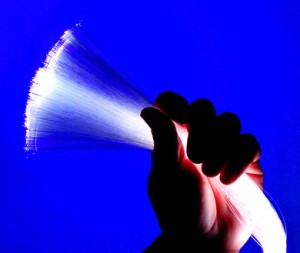 Telecommunication operates primarily in three wavelength windows: 750 nm to 850 nm, 1310 nm and 1530 nm to 1560 nm; where the latter is the best as a consequence of low loss-levels and the invention of erbium signal amplifiers. Nevertheless, other carbon based materials are sought in an attempt to replace, and maybe supersede, the rare earth containing systems that are used today.
Telecommunication operates primarily in three wavelength windows: 750 nm to 850 nm, 1310 nm and 1530 nm to 1560 nm; where the latter is the best as a consequence of low loss-levels and the invention of erbium signal amplifiers. Nevertheless, other carbon based materials are sought in an attempt to replace, and maybe supersede, the rare earth containing systems that are used today.
Xiaoting Liu and co-workers have in ‘New insights into two-photon absorption properties of functionalized aza-BODIPY dyes at telecommunication wavelengths: a theoretical study’ embarked on a road toward the better understanding of two-photon cross-sections. In this particular case, systems based on BODIPY dyes are under theoretical scrutiny, in attempt to find a system that can work—via two-photon absorption—in the optical windows used in telecommunication.
The fact that the direct absorption of the f–f transitions are low—typically with molar absorptivities below 1 M-1cm-1—are the reason why two-photon processes might be able to compete with absorption by lanthanide ions. The systems studied in the paper never quite reach the 1510 nm window, but do make it to 1310 nm by two-photon absorption. In fact, single photon absorption of some of the systems under investigation is found to be in the high energy/high frequency range of the telecommunication window around 800 nm.
Intrigued? For the molecular structures and much, much more see:
New insights into two-photon absorption properties of functionalized aza-BODIPY dyes at telecommunication wavelengths: a theoretical study
Xiaoting Liu, Jilong Zhang, Kai Li, Xiaobo Sun, Zhijian Wu, Aimin Ren and Jikang Feng
Phys. Chem. Chem. Phys., 2013, 15, 4666-4676
DOI: 10.1039/C3CP44435J
by Dr Thomas Just Sørensen










